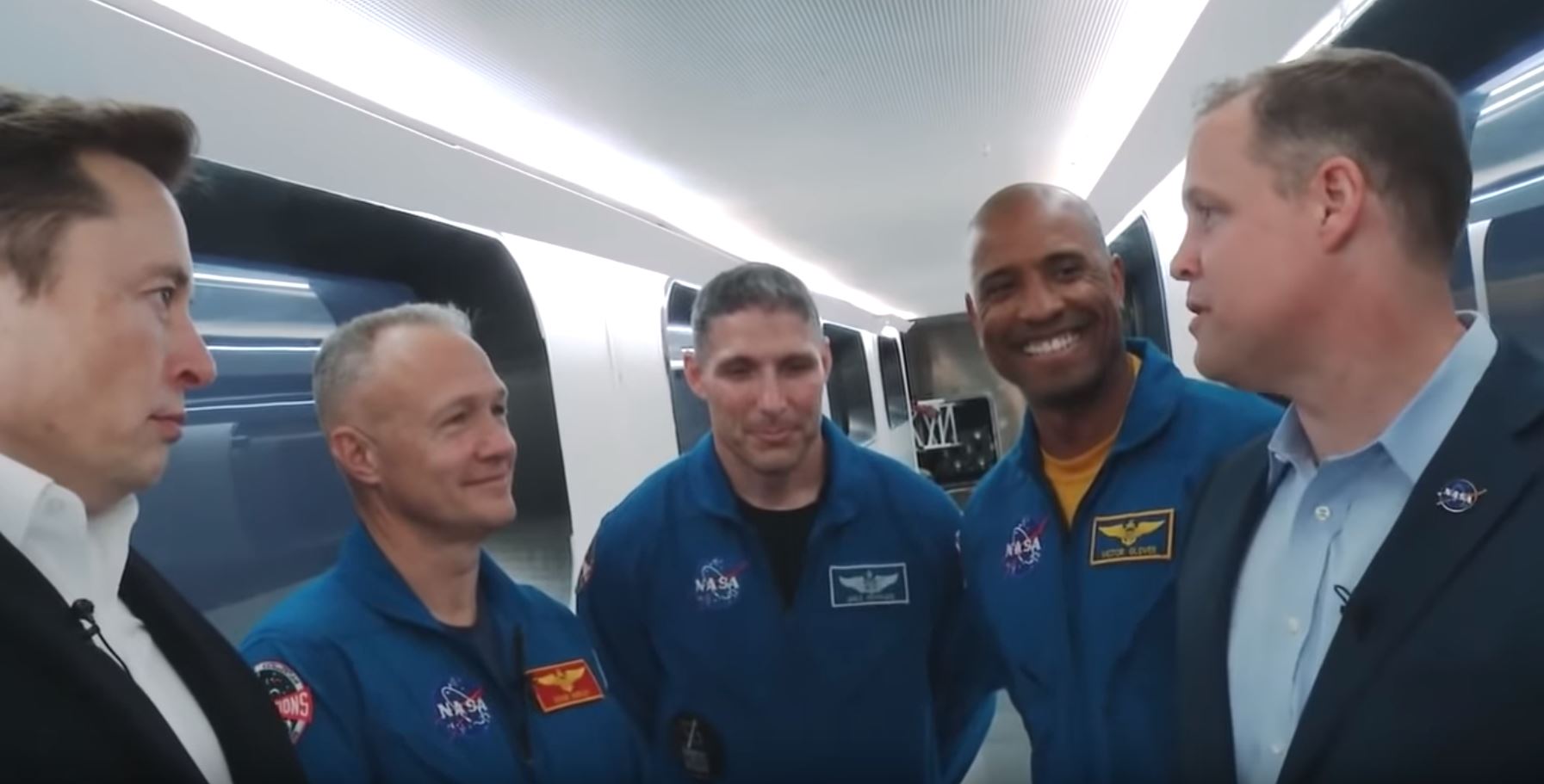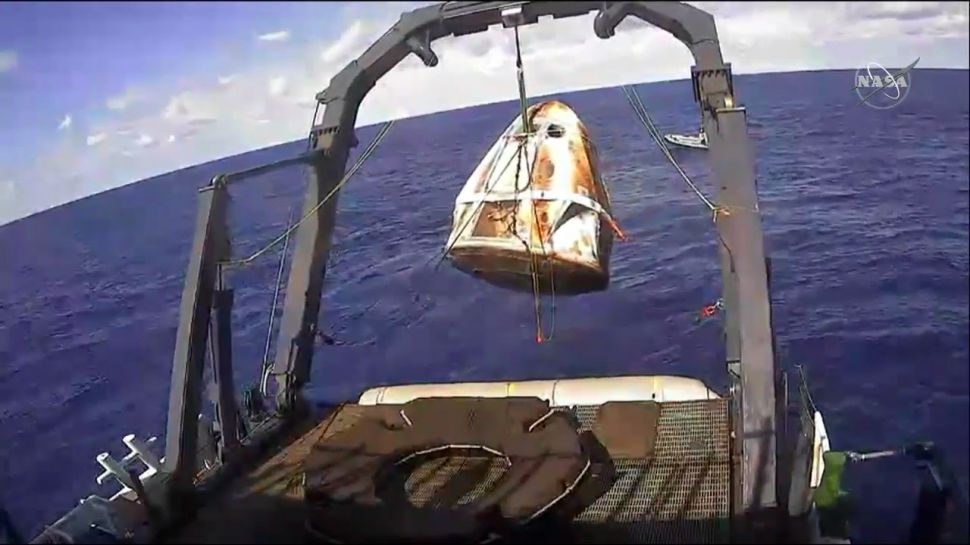Here's What Elon Musk Had to Say to NASA's Chief Before SpaceX's 1st Crew Dragon Test Flight (Video)
Hear from the future riders of Crew Dragon, the reusable vehicle developed by SpaceX through a partnership with NASA.
The four NASA astronauts — Victor Glover, Bob Behnken, Doug Hurley and Mike Hopkins — spoke with NASA Administrator Jim Bridenstine and SpaceX founder and CEO Elon Musk before the start of Demo-1, the six-day test flight that marked Crew Dragon's first foray into space.
The spacecraft didn't carry any living passengers on its March 2 launch to the International Space Station (ISS) — but an instrument-laden dummy named Ripley did travel aboard.

The six people featured in the video stood on the astronaut walkway — the concourse connecting the tower and the Crew Dragon spacecraft — of Launch Complex 39A. That's the historic pad at NASA's Kennedy Space Center in Florida that served as the jumping-off point for all of the Apollo moon missions.
American astronauts haven't launched into orbit from U.S. soil since the space shuttle Atlantis lifted off in July 2011 on the final shuttle mission. But that could change soon: This summer, Crew Dragon is scheduled to launch on a crewed test flight to the ISS. The first operational flight will follow shortly thereafter, if all goes according to plan.
The nearly 20-minute video starts off with Bridenstine asking Musk to open up about why SpaceX is pursuing its ambitious work. Musk responds that he wants to see the human species become interplanetary before he dies.
One of the video highlights is getting to hear from each of the four NASA astronauts who will fly on Crew Dragon when it lifts off with humans for the first few times.
Get the Space.com Newsletter
Breaking space news, the latest updates on rocket launches, skywatching events and more!

Bridenstine asks each astronaut where they were in 2001, the year that Musk's thoughts for SpaceX first began materializing.
"I was learning to fly jets, and I actually got my [naval aviator] wings that year," Victor Glover replies.
That same year, NASA astronauts Bob Behnken and Doug Hurley were classmates as astronaut candidates, "learning the trade," as Hurley puts it.
Alberta, Canada, was once home for Mike Hopkins, where he worked with the Canadian Flight Test Center testing jets.
When asked about the lens through which the crew would watch Demo-1, Hurley says, "We're just trying really hard to see every bit of the system go through its paces.
"We just want to see the teams work all the way through to launch, and then we got to get the vehicle activated to orbit, then work our way through a rendezvous. Then, we're trying to ... actually see the docking [at the space station]," Hurley adds. He and the other astronauts are keen to see "how the teams all work together and make this mission successful, and all the way through to splashdown," Hurley says.
Demo-1 ended its almost weeklong run on March 8, when Crew Dragon splashed down softly into the Atlantic Ocean.
NASA made two major commercial-crew agreements back in 2014. As a result, SpaceX received $2.6 billion to develop Crew Dragon, and another U.S. aerospace company, Boeing, got $4.2 billion to work on its CST-100 Starliner capsule.
- See the Evolution of SpaceX's Rockets in Pictures
- The Spacewalks of Expedition 59 in Photos
- Meet SpaceX's Starship Hopper
Follow Doris Elin Salazar on Twitter @salazar_elin. Follow us on Twitter @Spacedotcom and on Facebook.
Join our Space Forums to keep talking space on the latest missions, night sky and more! And if you have a news tip, correction or comment, let us know at: community@space.com.

Doris is a science journalist and Space.com contributor. She received a B.A. in Sociology and Communications at Fordham University in New York City. Her first work was published in collaboration with London Mining Network, where her love of science writing was born. Her passion for astronomy started as a kid when she helped her sister build a model solar system in the Bronx. She got her first shot at astronomy writing as a Space.com editorial intern and continues to write about all things cosmic for the website. Doris has also written about microscopic plant life for Scientific American’s website and about whale calls for their print magazine. She has also written about ancient humans for Inverse, with stories ranging from how to recreate Pompeii’s cuisine to how to map the Polynesian expansion through genomics. She currently shares her home with two rabbits. Follow her on twitter at @salazar_elin.









